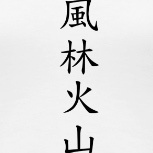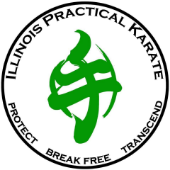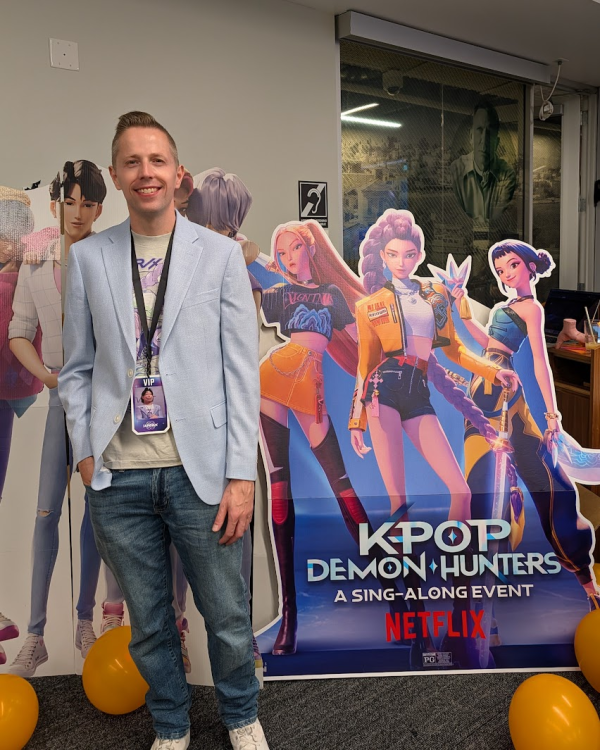Leaderboard
Popular Content
Showing content with the highest reputation since 10/29/2025 in all areas
-
It sounds like your approach to the Pinans is the same as it was originally, for the youth. I agree with your assessment that if the applications can be found in other kata, then the redundancy just isn't necessary. I'm not a fan of curriculum for curriculum's sake.3 points
-
Oh, it's definitely controversial. Some people get REALLY mad about it. My view, though, is similar to Yabu Kentsu, who said "if you have time to practice Pinan, practice Kusanku, instead," although there is also material from Passai and Chinto in the Pinan series. Basically, the Pinan kata were developed by Itosu for his school PE karate program, and while they do have valid and effective applications, almost all of those applications can be found in the older kata. Additionally, I've found that teaching the Pinan series and then teaching Kusanku, Passai, and Chinto actually makes it MORE difficult for students to learn the older kata, not less, as is often claimed. It takes a long time for them to be able to stop mixing up the kata, because there are such similar sequences. I don't have any issue with the concept of yakusoku kumite, but the way that most yakusoku kumite is designed is just bad. The distance is too large, the techniques are applied impractically, the attacks are unrealistic, etc.3 points
-
Today marks the 24 and a half birthday for KarateForums.com. That is quite a landmark! The fact that this community has lasted for so long is a testament to its members and how we all interact with each other. Sure, there have been ebbs and flows along the way, but by and large, it’s easy to see why this community has stayed active for so long. It’s because we are a community. KarateForums.com is so much more than a collection of random usernames floating about the ether of the internet. Amid a collection of newer members and longtime members, one can see that this is a community nurtured by caring and respect for others. Upon first glance at our community, it would appear that martial arts brought us all here, and one would think that martial arts is what binds us all together. I think it’s much more than that. Martial artists are who we are, and who we are is why we are martial artists. The drive, the determination, the perseverance of sticking with something and making it not just a hobby, but a lifestyle, says something about who we are. And that “something” is also what continues to build this community. All martial artists experience the highs and lows, positives and negatives that come with a lifetime of training in the martial arts. This community, KarateForums.com, has been a pillar of support for those of us who continue along this journey, because community members come here to laugh, cry, exclaim, and gripe about our training, knowing we are coming to an open and honest community that will back each other, guide each other through, and support each other as we navigate “the way.” Whether one has been a student for 30+ years or is a brand new white belt just donning the gi for the first time, KarateForums.com is a collection of like-minded individuals that all share a common set of interests, and I truly see that each and every one of us genuinely cares about everyone else here and the goals that we have. KarateForums.com isn’t just another website; it’s as much a part of my martial arts journey as practicing the martial arts is. I truly believe I am not alone in this. The longevity of KarateForums.com is good proof that this is the case for many others as well. Happy half-birthday, KarateForums.com! Let’s keep it rolling!2 points
-
Funakoshi discussed what he learned from both Anko Itosu and Anko Asato in Karate-do: My Way of Life, and some of his other works. Both Mabuni and Gusukuma have only had the same two teachers: Itosu and Higaonna. The Shito-ryu curriculum divides their kata into two groups: the ones taught by Itosu and the ones taught by Higaonna. The Tomari-te katas are listed under the ones taught by Itosu. Hanashiro only trained directly under Anko Itosu.2 points
-
2 points
-
Yeah i think that Dak is a large part of the problem tbh. I have always thought he is massively overrated. Was interesting that one of the studio guys came out and said that on the UK NFL coverage the other day (he was a former Giant DL) and the other posts really had a go at him for it, talking about how great Dak is. I've never seen it tbh. He is decent but not a top tier QB1 point
-
Hello, Welcome to the voting period for the 24th annual KarateForums.com Awards! Through these awards, we recognize just a few of the individuals who have made outstanding contributions to KarateForums.com in the past year. You submitted your nominations and, from those, we have our KarateForums.com Awards 2025 nominees. In all, 11 different members have been nominated in the various categories that make up this year's awards. They are @KarateKen, @Nidan Melbourne, @Zaine, @Spartacus Maximus, @aurik, @DarthPenguin, @bushido_man96, @sensei8, @Wastelander, @crash, and @Himokiri Karate! KarateKen was nominated in 4 categories, the most of any member, followed by Spartacus Maximus, bushido_man96, sensei8, and Wastelander with 3. Our historical award numbers have been updated and new milestones have been reached! Congratulations to Spartacus Maximus on reaching 20 nominations (now with 22, 6th all-time) and KarateKen on hitting 5 (now with 7, T17th all-time)! I also wanted to highlight Wastelander for reaching the top 5 all-time. Previously, Wastelander was T5th (technically in the top 6), and now is T4th. With the ballots crafted, it is now time to vote. What You Should Know Before Voting These awards take into consideration all community activity between October 19, 2024 and October 18, 2025. You should vote based upon activity during this period - not activity before or after. To vote, you must have a KarateForums.com account with at least 10 posts made on or before October 18, 2025. You cannot vote for yourself. If you do, it will be removed. Your votes will be kept private. We do not publicly reveal who voted for whom. Please do not attempt to artificially inflate our vote totals in any way. This includes, but is not limited to: Trading votes, encouraging people to vote indiscriminately (publicly or privately), sending spam and any other behavior that could lead to results being artificially skewed. Members found to be participating in these activities will be disqualified from nomination in any category. Please note that you do not have to vote in every category. You can vote in as many or as few as you would like - please go for as many as you feel comfortable with. The more valid votes we receive, the better! Categories The categories are listed below. For each category, you will find a link to the ballot where you can vote. Member of the Year https://karateforums.com/topic/52457-awards-25-member-of-the-year/ Community Spirit Award https://karateforums.com/topic/52456-awards-25-community-spirit-award/ Staff Member of the Year https://karateforums.com/topic/52455-awards-25-staff-member-of-the-year/ Funniest Member of the Year https://karateforums.com/topic/52454-awards-25-funniest-member-of-the-year/ Karate Contributor of the Year https://karateforums.com/topic/52453-awards-25-karate-contributor-of-the-year/ Health and Fitness Contributor of the Year https://karateforums.com/topic/52452-awards-25-health-and-fitness-contributor-of-the-year/ Instructors and School Owners Contributor of the Year https://karateforums.com/topic/52451-awards-25-instructors-and-school-owners-contributor-of-the-year/ Vote Now Please vote. Voting will be closed on December 6, 2025 at 8pm Eastern (UTC -5). Please do not post your votes in any thread. If you have any questions, please do not hesitate to private message me or reply here. Thank you for reading and for visiting KarateForums.com. Your participation in these awards is what makes them meaningful. I can't wait to see who you vote for this year. Sincerely, Patrick1 point
-
Every half-anniversary, I invite a member of staff (in order of seniority) to address the community. Thank you for writing this, Brian. I appreciate you and all of the members who have made this sentiment a reality.1 point
-
11/22/2025 BJJ: 10:00 - 11:00 am. Open mat. I don't know how many rounds we rolled today, but we did a bunch. There were three of us and we did round robins. A younger guy I hadn't met before showed up. He was quite a bit lighter than me. I did have a pretty good hip throw takedown. I don't recall if it was from an underhook, or if he tried to step behind me to take me down and I was able to keep a base and wrench him back over. I do recall I was really deep with my hips, behind both his legs, and when I threw him I was worried that one of his legs stayed planted and twisted his knee up. Thank goodness that wasn't the case. I also pulled up on the finish so it just wasn't an absolute slam. During a few of the rolls with this kid I was able to get a couple of Americanas going. Didn't quite get them finished, but I was getting close; I know time ran out on at least one of them. The kid was really lanky, too, and had a pretty sticky guard. The other was one of the coaches, I guy who's short and stocky like me. I always struggle against him. He just keeps moving and framing. I need to keep my legs more active. When they stop I lose what decent position I had gained and end up getting sucked back into a guard of some kind. The coach would stop and briefly discuss a few things here and there, but by and large we kept the rounds going, which was great. At the end of the class, he did cover some details on mount and moving up to high mount and isolating an arm.1 point
-
What besides redundancy could motivate a martial arts instructor to decide not to pass on something?1 point
-
I think that might be a bit controversial. I think all kata that predate karate moving to mainland Japan should be safe from elimination. All katas developed after that, especially the ones meant to be taught before the Pinan and Heian series (or Naihanchi and Tekki, if your school teaches those before Pinan and Heian) should be fair game. Even the more advanced ones, such as Ananku and Gorin should be fair game. I agree with this 100%. I think yakosoku kumite is useful, but I don't believe it should be testable.1 point
-
Some winners from Tuesday were the Jets, Lightning, Sabers, Ducks, Red Wings, and Hurricanes with several games going on right now. Knights, Blackhawks, Islanders, and Sharks all have the lead.1 point
-
Full meltdown by Raiders fans after the ugly blowout loss to the Cowboys. It is an embarassing night on Monday for the Raiders who were defeated at home 33-16 against a Cowboys team that has struggled badly and has the worst run defense in the NFL. The Raiders only ran their rookie RB, their top pick, six times. After the game Pete Carrol was asked about giving more playing time to the young guys and said, "I don't know how to coach that way, we are trying to win games." It has been a miserable season for the Raiders with many fans saying the team looks uninspired and not prepared. Is Pete Carroll on the hot seat? Is it time to move on from Carroll and find someone new after only one season? It might be. The Raiders are 2-9, have lost four in a row, and are one of the worst teams in the league. Coach Carroll has a chance to end the losing streak on Sunday when the Raiders host the dreadful Cleveland Browns.1 point
-
Rika Usami's speed is lightning. If I had any criticism, it would be questioning if she could hit a heavy bag that way, and what would happen if she did. Her pacing is excellent for demonstrating technique, posing between moves, and it works for her style of karate.1 point
-
I am exactly the same way. If it's sitting there waiting for me, then I don't have to buy when I want to read it. I'm now poking my way through Heavy Bag Workout by Sammy Franco. It's got some interesting ideas on changing up heavy bag training.1 point
-
They beat the struggling Blues but today they lost to the struggling Wild. Minnesota has 22 points, fifth in their division, and gets the OT win against Vegas 3-2. Both teams seemed unhappy with the officiating. Hey, at least Vegas won the Cup a few years ago, this is season 25 for the Wild and they have never been to the SC Finals. Slow start for both teams to this season.1 point
-
Think of the nunchaku like a nut cracker. Two ends applying extreme amounts of force on a central point. Now, think where you can apply that force, such as wrists, elbows, neck, feet and ankles.1 point
-
Hi everyone I'm new to the forum also I'm looking to get back into Shotokan karate and I can't seem to find a school near me here in N.E. TN (Tri-Cities) that's still open. Can anyone point me in the right direction? Much appreciated.1 point
-
The first place I’d look is the ISKF website, since that’s the largest Shotokan organization in the Americas. Next would be JKA (both AF and WF). From there, look at WTKO, JKS, and SKIF USA. All of these websites have dojo directories.1 point
-
If you are getting the odd one that comes to light occasionally, it's probably not all that different. But it's only going to get worse globally. I also don't know if you have gambling the same way we have... like you can gamble on literally every single action. You can place hundreds (thousands?) of bets on a single game if you so desire. Sad to say, I agree here. They really rush in and created this massive economy to where so much of the money coming into sports leagues, broadcasters, podcasts, etc. is in some way tied to gambling. It is going to be very challenging to reduce it. But I hope it happens.1 point
-
Agree with this and @bushido_man96 response, it has gotten out of control. For me it is also damaging my ability to enjoy sports. It has all shifted to the gambling and corporate greed now. We are bombarded with sports betting ads, even ESPN and Fanatics have an online sports book. In the NHL the Vegas Golden Knights wear a patch on their jersey for a Las Vegas sportsbook. It is everywhere. Furthermore, now anytime someone's team loses, anything strange happens, or a call is missed, the fans of that team claim the game is rigged. I wonder if we will see some cutback on this now that we have several scandals in the news at once, but I don't expect much of that. There is too much money in it.1 point
-
I agree, the accessibility to gambling now is just crazy. Every sports podcast and show I watch or listen to has some kind of multi-leg parlay to offer you, and the online sports books are sponsors of every show. I can't believe how much the increase must be with the advent of this online accessibility. It is no surprise that some athletes will get caught up in it as well.1 point
-
Good luck! I didn't try for tickets for the London 2012 games (which is a fair distance but doable) and i had friends who went and said it was great. If you can manage it it would definitely be something to do i think, a once in a lifetime experience. Especially if your mini people will be old enough to take in the experience1 point
-
This is exactly it. If enough people decide not to buy the tickets prices will drop. Part of the problem also is the resale market. Some people are buying up lots of tickets and reselling them at a much higher price. This causes the original prices to be raised also because the entertainer looks at the ticket prices in the resale market and says, "why should a reseller make more money on my tickets than I do?" So, they raise the price to try and match it. Ticketmaster wants that ticket to keep reselling because every time it does, they get more money.1 point
-
Yes, I have definitely noticed. I can see the value in summaries, though I do share your concern for accuracy because most people won't vet it. We also can't escape the fact that it is pulling from sources that are likely authoritative, but will see no benefit in the form of web traffic, ad views, or even the opportunity to have someone know the name of the website it came from. This will disincentive the further creation of that authoritative content. I tried to block ChatGPT from this community, just out of respect for members and their contributions, but that protection was accidentally removed when I upgraded the software. Come to find, it might not even matter: https://www.plagiarismtoday.com/2025/07/23/chatgpt-ignores-robots-txt-rehashes-my-column/1 point
-
The deluge of gambling ads across sporting events is a plague. I really dislike it, and while there are always going to be avenues to gamble, the accessibility of it is only begging for scandals. Having a toddler who watches sports, I am already getting ready for the eventual conversations about what it is, why he shouldn't do it, etc.1 point
-
1 point
-
It can be a good training exercise to push your speed in forms to the point that technique breaks down in order to gain some extra speed, so your body at experiences what it is like to move faster than you usually do. It's also important to finish with a dialed back speed in order to keep the technique clean. By pushing the higher speeds, your body will start to adapt to it and your technique will get cleaner as you push the speed, along with clean-paced work.1 point
-
That is for sure. And I definitely feel like Aikido and BJJ are going to be especially long marathons.1 point
-
There were three books that I read by Kousaku Yokota, one of which discussed this. Shotokan Myths, Shotokan Mysteries, and Shotokan Transcendence. I can’t remember which one, but it’s one of these.1 point
-
1 point
-
1 point
-
It seems like the bad news has just been rolling in this past week. Condolences to the Tagliabues and the Kneelands.1 point
-
Great conversation. In my typical experience with it in TKD, it was strictly structural and for "power development," because "every action has an equal/opposite reaction," which I've come to see that is basically a bunch of malarky. However, the current TKD organization I'm in has an example for its use in a one-step, where the hand secures the wrist of the partner and pulls back as we execute a knife hand strike with the other hand. This is the only application of such that actually shows up anywhere in our TKD curriculum, sadly. That said, from doing my own studies and research, I've come to see it as a pulling mechanism for technique applications, and I train it as such and explain it as such to our students when I'm teaching. If we get the chance to applications work, I make sure to show the application. I am seeing a lot of applications of the pulling hand in my Aikido techniques.1 point
-
Axel Foley is an excellent choice! Myself i didn't dress up by my kids did: my daughter went as a Disney Princess and my son as Goku1 point
-
A tie is not going to get it done for the Raiders. They are in a tough division and behind the eight ball after a terrible start. Going for the win makes sense there.1 point
-
1 point
-
Not an MLB fan anymore, but I have to admit that this game was worth watching. It was one of the greatest games I have ever seen. It was wild from start to finish, and the Dodgers beat the Blue Jays 5-4 in 11 innings, winning after being down 4-2 in the 8th. Toronto had chances, runner on third with one out in both the 9th and 11th but did not score. Would have been nice if they had won, it has been 32 years. Amazing game, disappointed in the result. Note: This was only the third time a WS game 7 had gone to 11 innings, the last one was in 1997 when the Marlins beat the Indians. The other was in 1924!1 point
-
I'm not really a horror movie guy, they just don't interest me that much. That is, unless there are zombies involved. I love a zombie movie. Night of the Living Dead wasn't the first zombie movie I ever watched, but it is the one I probably I watch the most.1 point
-
It looks like if I read further, you mean kata in particular. I think that would require paying for private lessons if you're trying to bypass the full curriculum. I'll play devil's advocate and say that I don't disagree with the instructor. To quote Terry Silver from Karate Kid Part III, "Did you come here to teach or to be taught?" Even in the first two Rocky movies, Mickey had to assert his position over Rocky whenever Rocky expressed disagreement with Mickey's training methods. And Rocky did the same thing with Adonis Creed in the first two Creed movies. I don't think it's unreasonable that the instructors running the school don't want someone who hasn't paid their dues hijacking their classes. When we speak of learning from lower ranks, it doesn't mean someone of lower rank assuming the role of the instructor. It usually comes in the form of the person of higher rank seeing a technique that the lower ranked student used, and specifically requesting how to execute it. If you have a technique that you want to share, I think sparring is the best time for it. That's when you'll get the feedback you're looking for.1 point
-
I've been enjoying it immensely. It's can be hard to teach your children, especially at first. You're their parent, and kids have a hard time switching into that mode of learning rather than just being your child. Anyone with a child who was in school during lockdown can tell you this. However, it is very rewarding.1 point
-
There are few things in martial arts practise that are as rewarding as the opportunity to share it with one’s own child. Generations ago it was much more common for parents skilled in something to actually pass it down and teach/train a son or daughter. The possibility of this is actually a great personal reason to keep practicing.1 point
-
My first student was my child. Unless you want a more philosophical answer, in which case I was my first student.1 point
-
Not counting teaching as an instructor under the very watchful eyes of our Soke and Dai-Soke or for teaching at the college; because those students were provided. All I had to do was just show up for classes. When I opened my Kyuodan dojo as a Sandan, I passed out flyers anywhere and everywhere to advertise my upcoming grand opening. Had 2 classes for my grand opening; kids and adults. I signed up 75 students. So, I found my first STUDENTS, not student through my proactive advertising, of which, my prospective students found me and I found them.1 point
This leaderboard is set to New York/GMT-05:00



.thumb.jpg.6ec1daf291cd6fd9ebc21f5205adf035.jpg)








